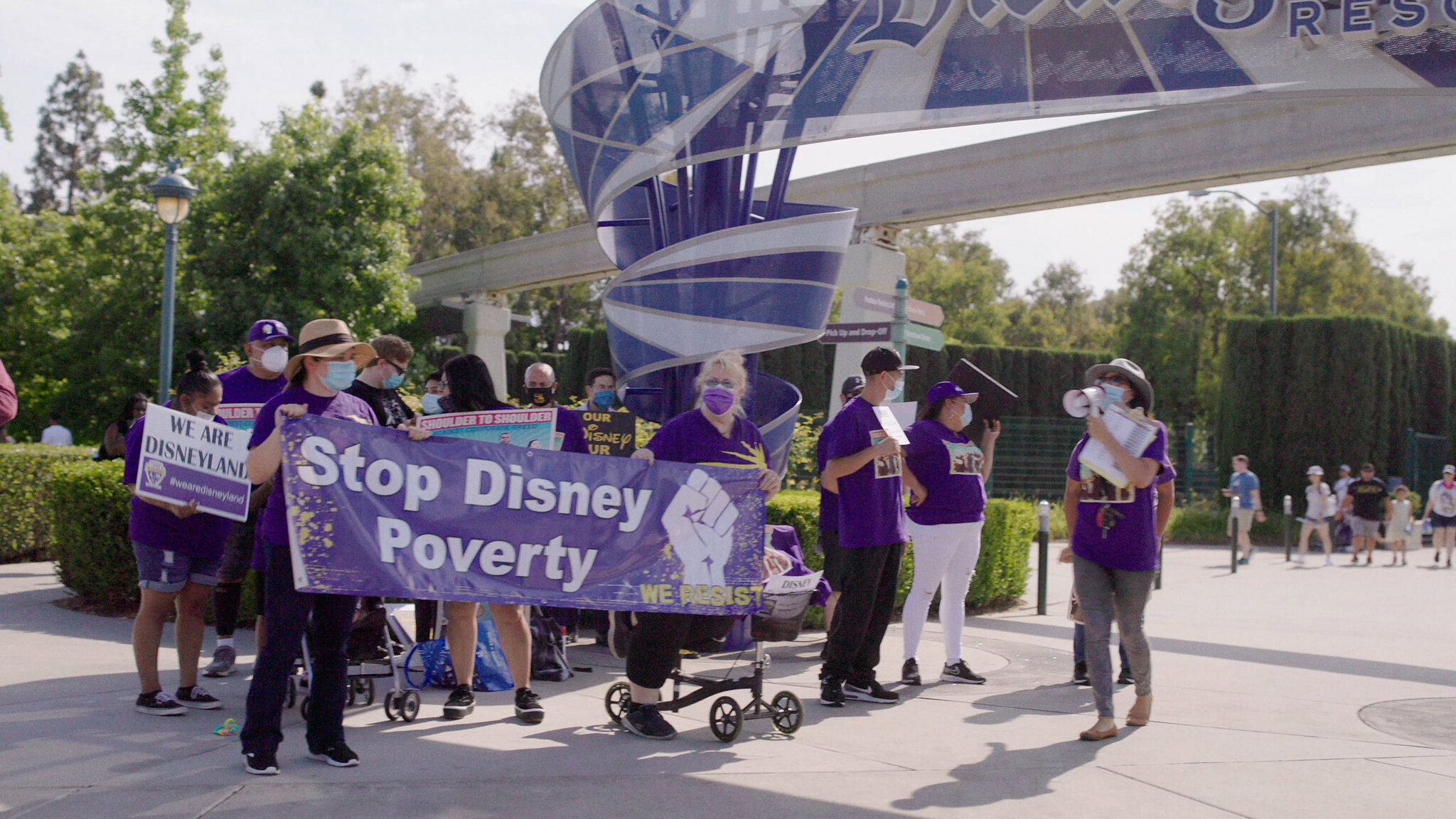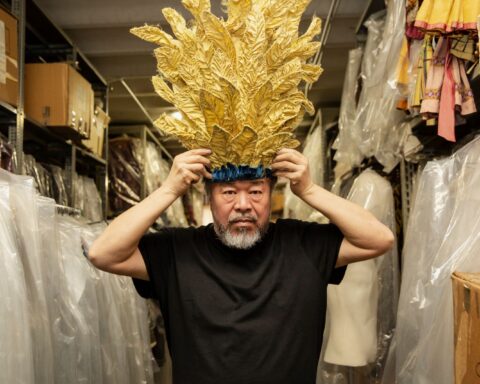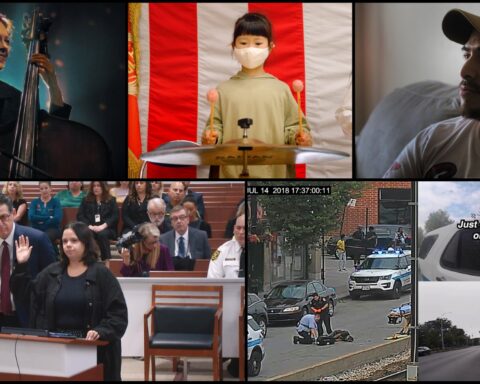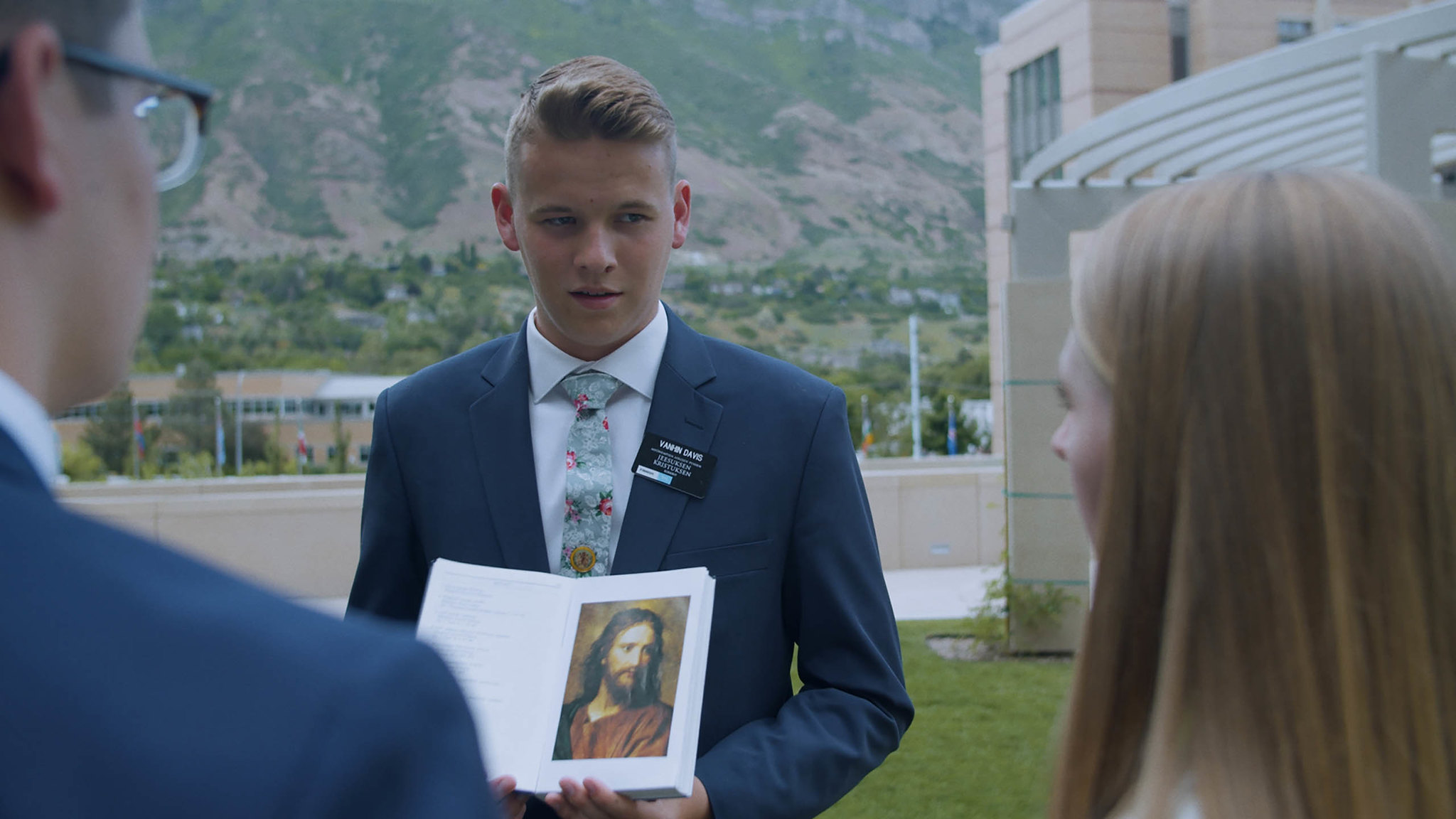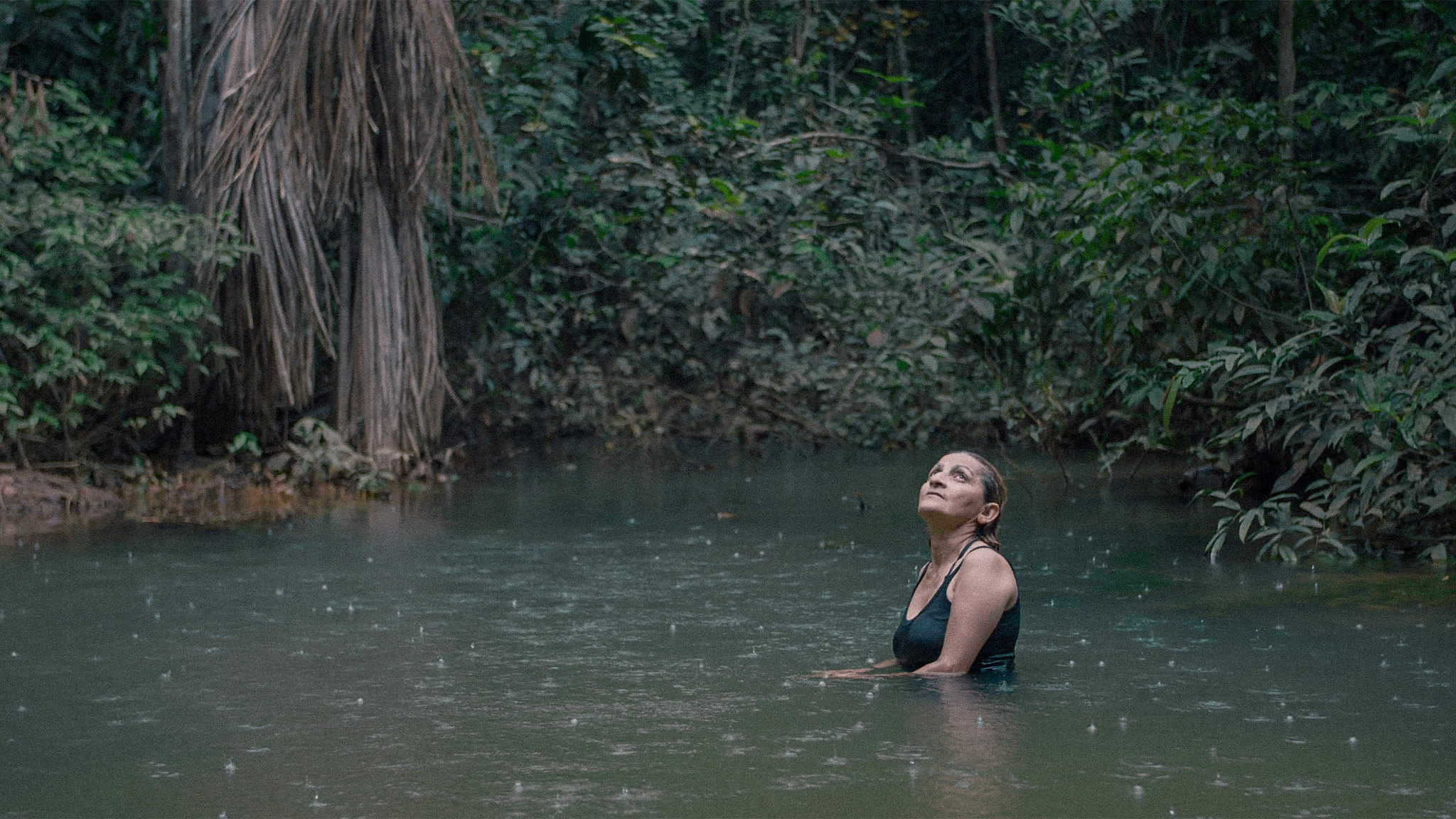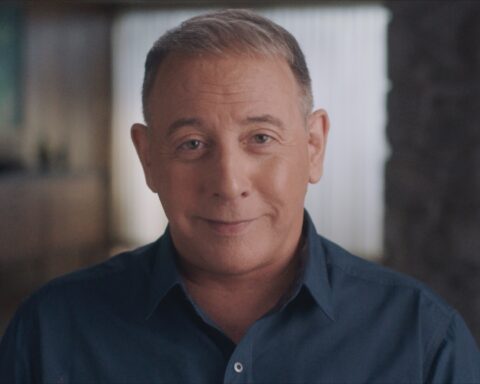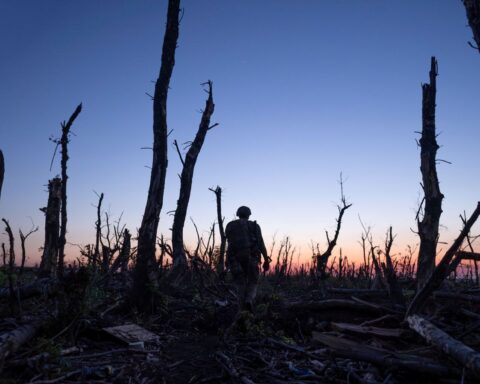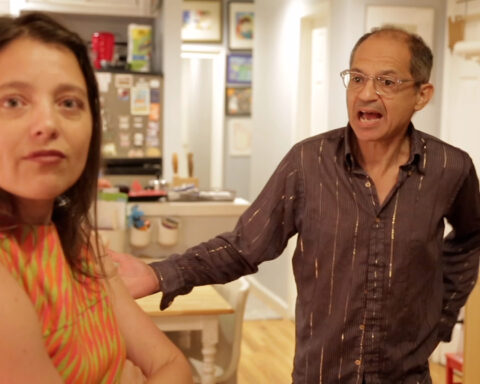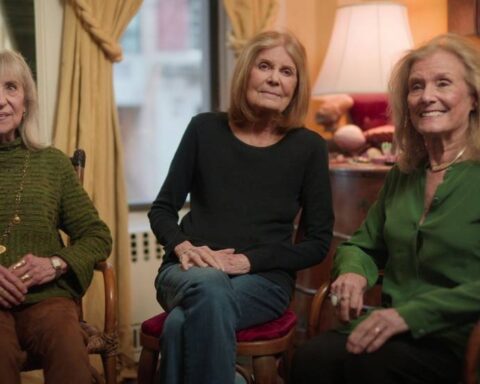The American Dream and Other Fairy Tales
(USA, 87 min.)
Dir. Abigail E. Disney, Kathleen Hughes
Programme: Special Screenings (World Premiere
Dr. Abigail Disney wonders in The American Dream and Other Fairy Tales if she romanticizes her grandfather. Her grandpa, Roy E. Disney, of course co-founded with his brother Walt the cinematic powerhouse that bears their name. The Disney name remains synonymous with joy, enchantment, and love. However, Disney notes that her family’s movies and its lucrative theme parks trade in fantasy. The myth of the American dream is as fantastical as the tales of Snow White and Cinderella. Disney summons in The American Dream a provocative essay about the widening inequalities brought by the capitalist system from which she benefits. The time of men like Roy Disney has passed and so too has the magic his kingdom offered. The horse-drawn coach has turned into a pumpkin, and the gourd has grown soggy.
Disney thinks about the life her grandpa left her and the riches she inherited simply by sharing his name. Her grandfather, she notes, prospered in the growth of post-war capitalism, but so too did his employees. Owning the company meant that Roy earned handsome dividends, yet Disney reflected its success in what it gave to employees of all stripes. The people doing custodial labour at Disneyland could have a home and feed their family. They could maybe even take a vacation of their own to recharge before giving other families magical moments at the “happiest place on earth.”
The “Cast Members”
The American Dream and Other Fairy Tales contrasts Roy Disney’s practice with the present reality of Disney. The rich/poor gap is wider than ever, as noted by the fact that Disney CEO Bob Iger makes 2000 times the annual salary of a custodian. Put another way, the people tasked with sparking joy for families at Disneyland are hurting.
The film assembles present-day employees at Disneyland to show how times have changed. The “Cast Members,” as they’re called in Disney’s corporate lingo, include Ellie. She works part time while studying to be a teacher. Her case is not unique among the millions of young people working 24/7 and scraping by for college. What’s different, however, are the cost/benefit and time/reward dynamics. Ellie recognizes in her interviews with Disney that she may never be able to move out of her mother’s house. Alternatively, she can sacrifice her studies for more take home pay, or change career aspirations. No choice is simple or fair, especially when Iger nets $65 million a year. (In 2018, anyway.)
Another painful story comes from Artemis, who works as a custodian at Disneyland, but struggles with inadequate housing. Unlike the days of Roy Disney, the helping hands tasked with upholding Disney’s squeaky-clean image can’t afford a decent home. The film observes as Artemis struggles to find a new home for herself and her cats after a burst pipe leaves her scrambling. The only thing she can afford is a two-hour commute away. That’s really out of whack when The American Dream emphasizes how the Disney corporation’s prosperity is built into the infrastructure of Anaheim, California. Expansive highways bring tourists to Disneyland with speed and ease, but the trip for employees means sacrificing time with family and friends, or time at secondary jobs that help pay the bills.
Ralph and Trina
Then there’s Ralph and Trina. They both work at Disney and their combined salaries don’t provide for their family. Trina works night shifts to get slightly higher pay (a pittance) and misses precious family time that she’ll never get back. Health problems complicate their family situation, too, despite the aid that Disney claims to offer its employees.
Abigail admirably tries to engage the Disney corporation in the conversation. Even a kin of the Disney dynasty receives little more than PR platitudes. She receives notices about the services Disney offers employees. These include education plans that don’t cover career aspirations, and health plans that one can’t afford on a Disney wage.
Of Yachts and Hunger
Abigail admits in the film that she has no formal role with Disney, yet The American Dream likely performs more outreach to employees than the company has done. The doc deftly extends the circumstances in which Ellie, Artemis, Ralph, and Trina find themselves to others at Disney. A jarring group meeting sees Disney ask employees for a show of hands following queries about their livelihoods. One in ten full time workers were homeless within the last two years. Two thirds of employees can’t pay for food. They are strained mentally, emotionally, and financially. The film makes clear that the buck doesn’t stop with the Mouse.
“The Disney Company is ground zero for the widening inequality in America, but there’s a myth that Disney’s prosperity will trickle down to ordinary people,” says Peter Dreier, Professor of Politics, Urban and Environmental Policy at Occidental College, in the film. “The city council, the mayor of Anaheim, have believed that if Disney does well, the city of Anaheim does well.”
These “trickle down” economics obviously don’t work, yet Disney considers the Reagan years to see understand why they persist. She sees a shift from the Roys of post-war America to the contemporary CEOs who thrive by giving others less. The circumstances of the COVID-19 pandemic, moreover, sharpen the inequalities in America. The subjects that Disney follows are hit harder as jobs are furloughed. Food banks provide necessary sustenance, but the doc observes the failures of the current capitalist system to provide for all Americans.
Leading By Example
The character-driven American Dream and Other Fairy Tales situates Disney’s own story among the other perspectives. She acknowledges her privilege from the outset and considers why the comforts she enjoys so easily are set beyond reach by the society in which we live. A cynic might dismiss her efforts as white liberal guilt, but as her “tax me more” arguments and viral tweets stoke conversations about the systems that govern America, she makes a shrewd point by using herself as the example. The choice to live comfortably is simply that for the one percent: it’s a choice. It’s a choice that Roy Disney makes and its one that contemporary CEOs make.
This doc poses provocative questions and gives audiences face time with the very people hurt hardest by inequality. Approaching the rich-poor gap from an earnest philosophical question, the doc asks why sales of luxury yachts are spiking when more Americans are going hungry or homeless. Why so few other wealthy Americans are willing to answer speaks volumes about the challenge ahead. Disney admirably leads by example, and one wishes the company that shares her name did the same.




